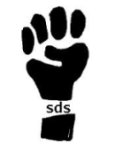Agorism Contra Marxism, part 7
[This continues a multi-part summary of known existing portions of Samuel Edward Konkin III’s unfinished book Agorism Contra Marxism, which began, and ended, its serialization in Strategy of the New Libertarian Alliance #2, 1982-83.]
Radical Libertarian Class Analysis
Murray Rothbard himself continued to expand upon Libertarian Class Theory. His roots in the Old Right had introduced him to populist “bankers conspiracy” theories and the like. Added class viewpoints came from Left-statists and earlier anarchists. What he discovered was that the proponents of ruling classes, power elites, politico-economic conspiracies, and Higher Circles pointed to roughly the same gang at the top of the sociological pyramid.
Rothbard introduced the work of three Left Revisionist analysts to Libertarian Class Theory: Gabriel Kolko, Carl Oglesby, and G. William Domhoff.
Historian Kolko’s Triumph of Conservatism detailed how “capitalists” thwarted the relatively free marketplace of the late 19th century and conspired with the State to become “robber barons” and monopolists. Rothbard’s adoption of the Kolko viewpoint severed the alliance between radical libertarians and free-market apologists for conservatism.
Oglesby, a former president of Students for a Democratic Society, co-authored Containment and Change in 1967, which argued for an alliance between the New Left and the libertarian, non-interventionist Old Right in opposing imperialistic
What were the “Higher Circles”? The term came from Domhoff, a research professor of psychology, who described them as a subtle aristocracy with similar mating habits and association characteristics previously seen in other holders of State power and privilege. Rothbard’s discovery and dissemination of Domhoff’s work provided a solid base for his Power Elite analysis.
In nearly every ruling-class theory, the top of the statist pyramid was occupied by David Rockefeller’s interlocking-directorate corporate control of
To be continued...
-----Technorati Tags: New Libertarian, Movement of the Libertarian Left













0 Comments:
Post a Comment
<< Home